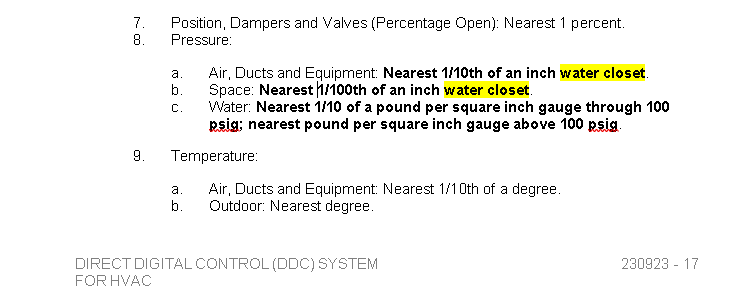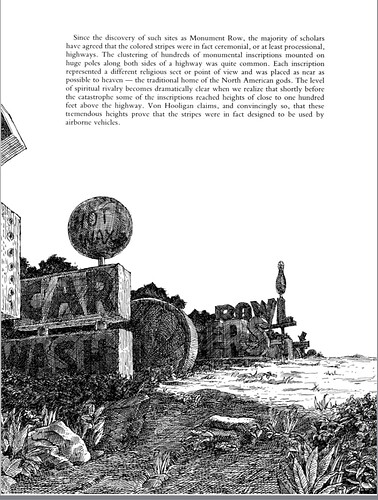Sorry; rubber boots and mosquito netting.
Yeah, although Marx was certainly keen to make history a science (ie, materialism, focusing on the economics and reality of class struggle, etc)… I don’t think he was correct about our ability to do that, since so much is left up to interpretive lens, there is so much missing in any given attempt to understand an event in the past, given what we’re depending on to do our work… even the best materialist is not going to be able to paint a coherent and entirely accurate picture of what happened back when, because your entirely dependent on who wrote what down, why they wrote it down, and what their angle is…
Yeah, I like that…
Indeed!
New South Wales’ first case of bat lyssavirus.
I’d say that history isn’t an experimental science, but it can be scientific. It does use evidence from the real world to confirm or refute hypotheses about the world. It is capable of rejecting false ideas like the medieval time skip, genocide denial, or the Jesus in America myth, by the use of evidence that contradicts these ideas. And the discovery of new evidence and/or sources does change our understanding of history.
Well, it can be, sort of
Pressure measurements? mmHg or inches of water? Did some Brit come along and change water to water closet for some reason? That is flipping bizarre!
Uhhh, maybe whomever wrote that saw W.C and guessed it meant water closet? As far as i know Water Column is a measurement used for pressure.
Yes, but that evidence is always incomplete, and is often heavily interpreted. the sources themselves always contain bias that must be accounted for, and the sources you use can change our understanding, sometimes dramatically. It’s always ends up being more an a narrative art that people debate and argue around rather than a definitive conclusion about the past. There is no getting around that. Yes, you can reject many false ideas completely, but there is always uncertainty there in what we do know.
I think experimental archaeology is very cool and it can be very insightful, but you’ll never be able to fully understand the use of an object in it’s own time, as much as you might try, at least no fully. We are in a different context, even if we work to get to as close to the original context as possible. It’s still looking at something through a lens of time that will distort things for us.
It’s spectrummy, like most things.
At one level, there’s the official “this object was (probably) used for this purpose”, and then the experimental archaeologists go out and see if this object in fact is useful for that purpose, and determine that it is very much not. (Sometimes they can identify what it probably was used for, but usually it’s more of a “no, it’s definitely not for that.”)
Then there’s the case where a friend of mine was doing a tablet-weaving demonstration as part of the lunch break entertainment at an academic seminar, and one lady was watching like a hawk. On questioning, it turned out that she was the world expert on historical tablet weaving, but had never actually seen it being done.
Then there’s the experience of the same friend who was doing a demo at a food and wine festival, and her display was on the history of grinding grain into flour. Start with two rocks (all the grain rolls off), so try two rocks but one is dished. Then a mortar and pestle, then up to a hand quern: two shaped rocks with a hole in the top one and a handle. You can see how to get to a mill from there. And part of that is you get to play with it, and experience how much work it takes to get it up to speed, how much skill you need to keep a constant stream of grain in, how you need the grain to lubricate it and keep it at speed, how much strength and skill it takes, generally. Apparently everyone was very impressed, until one lady originally from East Africa came up and was “Oh, I haven’t seen one of these since I was a little girl!”, sat down, and started grinding out flour like it was nothing.
My point is that you can’t entirely get into the mindset/headspace of the people who used whatever object your working on, because you are not of/in that context. ![]() For some of the reasons you list here, in fact. Using an object as an experiment is not the same thing as using an object in one’s daily life. It certainly can be a useful experiment and give you greater insight to what it might have been like, but it’s not going to be a case of giving you a full understanding of how people used/interacted with said object.
For some of the reasons you list here, in fact. Using an object as an experiment is not the same thing as using an object in one’s daily life. It certainly can be a useful experiment and give you greater insight to what it might have been like, but it’s not going to be a case of giving you a full understanding of how people used/interacted with said object.
I mean… fucking THAT… how many things were interpreted as “ceremonial” when they were, in fact, just everyday, fully secular objects! Context, context, context… it’s very hard to understand. We even have that problem in modern history, where things that were experienced one way are understood another way in the passage of time. I keep thinking about this with fascism in the 20s. We view it with absolutely horror, but one wonders if people acted in much the same way they’re viewing trump, Orban, etc, today, with a weird mix of horror and incredulous fascination about how… DUMB it all actually rather turns out to be when faced with it head on. Did people also view Hitler, etc with the same mix of humor and horror that we’ve decided to greet Trump with? Probably, because… Hitler was kind of ridiculous. If you don’t know that the death camps are coming, it’s much easier to take him less seriously. But we know now that we MUST take Hitler seriously, because… death camps…
I don’t know… I’m just ranting now.
Unsurprising - it is, after all, a miracle food.
Reminds me of a story that perhaps might’ve been posted at TOS. It’s cool enough of a story that i still think about it from time to time, about a hairdresser/archeologist making observations and discoveries about ancient hairdressing methods
I think we have a bingo. Someone (or an AI) incorrectly translated WC as “water closet” instead of “water column.”
You have described what I deal with in clinical and medical science almost perfectly. So many studies are published with unconscious, conscious, or systemic bias that it is unavoidable. Whether it is introduced in the study design, analysis, or implementation, it really is inescapable.
So when I use previous publications, I weigh them based on what I know about the authors, institution, and publication. Some articles I discard completely due to known bias or sketchiness. Even when there are reliable sources, I make up for potential bias with volume. There is definitely a problem in medical literature that is caused by authors who publish studies that aggregate their biases through multiple generations of studies on similar topics. I’ve seen studies where the main author is on the 10th study on a topic and they’ve designed this study based on the results and conclusions of their previous 9 studies, all of which started from and propagated a flawed premise.
The whole thing is made much worse when you factor in how many of these studies are sponsored by companies that are trying to sell something. And I’m as guilty of that as anyone. I do my best to design impartial studies, but there is simply no way I can eliminate unconscious bias, because ultimately my pay and bonuses are tied into the success of the product in the market. It’s an inherent flaw in the system that could be mostly eliminated if drug and device studies were publicly funded and independently designed, but we’re moving further and further away from that ideal instead of closer.
Exactly true. And why i always include qualifiers when talking about studies. No one study, no matter how divinely designed and executed, is ever the final word. That’s frustrating, because it means that there are indicators of some really interesting things, but until they are confirmed, they remain just interesting. And humans being humans, bias will always creep in. But, especially in medicine, i feel caution is the better part of valor. Not interested in experimenting on the kids in my office. Scientific method writ large is incredibly powerful, but is also easily abused and misapplied by seriously fallible (or sometimes straight-up evil) humans.
Indeed – for example, 100 mmHg = 53.5776 inches of water. Years ago, I used a 6 foot water column to calibrate pressure sensors in the human physiologic range. Needless to say I didn’t want to fool around with mercury. And a water column is a primary calibration, while an aneroid manometer is a secondary one, whose accuracy has to be assumed.
Too much information I know. At least it’s not the usual TMI.
I am disappointed that a manometer does not measure the hunkiness of a male ![]() or can you…
or can you…


